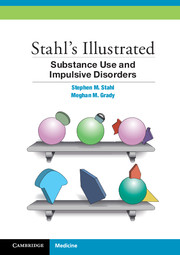Book contents
- Frontmatter
- Preface
- Contents
- CME Information
- Objectives
- Chapter 1 Substance Use and Addiction: An Overview
- Chapter 2 The Neurobiology of Reward and Drug Addiction
- Chapter 3 Alcohol
- Chapter 4 Opioids
- Chapter 5 Nicotine
- Chapter 6 Stimulants
- Chapter 7 Marijuana
- Chapter 8 Other Drugs of Abuse
- Chapter 9 Psychosocial Treatment for Substance Use Disorders
- Chapter 10 Disorders of Impulsivity and Compulsivity
- Summary
- Abbreviations
- References
- Index
- CME: Posttest and Certificate
Chapter 6 - Stimulants
Published online by Cambridge University Press: 05 February 2013
- Frontmatter
- Preface
- Contents
- CME Information
- Objectives
- Chapter 1 Substance Use and Addiction: An Overview
- Chapter 2 The Neurobiology of Reward and Drug Addiction
- Chapter 3 Alcohol
- Chapter 4 Opioids
- Chapter 5 Nicotine
- Chapter 6 Stimulants
- Chapter 7 Marijuana
- Chapter 8 Other Drugs of Abuse
- Chapter 9 Psychosocial Treatment for Substance Use Disorders
- Chapter 10 Disorders of Impulsivity and Compulsivity
- Summary
- Abbreviations
- References
- Index
- CME: Posttest and Certificate
Summary
The misuse of stimulants is a significant public health problem. Although therapeutic stimulants such as methylphenidate and amphetamine can be—and are—abused, the evolution of controlled release technology has somewhat helped to curb this problem. The abuse of cocaine and methamphetamine, however, continues to be a rampant problem. This chapter covers the neurobiology of stimulant use and abuse, the mechanisms of action of stimulants, and management strategies for patients with stimulant use disorder. It should be noted that the majority of data exist for cocaine dependence; however, pharmacotherapy for methamphetamine dependence is expected to be similar.
Methamphetamine is also a competitive inhibitor of the vesicular monoamine transporter (VMAT), located inside the DA terminal (3). It is therefore able to be packaged into vesicles (3). At high levels, methamphetamine will displace DA from the vesicles into the terminal (4). Once a critical threshold of DA has been reached, DA will be expelled from the terminal via 2 mechanisms: the opening of channels to allow for a massive dumping of DA into the synapse (5) and the reversal of the dopamine transporter (6).
Methylphenidate and amphetamine are given orally and have a longer onset and duration of action compared to cocaine and methamphetamine (A). Although they can be abused if injected or snorted rather than taken orally, the controlled release formulations that are now commonly prescribed make this more difficult.
Cocaine and methamphetamine, by contrast, are generally administered intravenously, by smoking, or by snorting. In fact, cocaine is not even active orally. Correspondingly, cocaine and methamphetamine cause a rapid increase in DA, followed by a relatively rapid decline (B).
The treatment of stimulant intoxication is generally supportive and addresses autonomic hyperactivity as well as paranoia and hallucinations, if necessary. However, many patients will recovery within hours without treatment. Treatments that have been used or investigated include beta blockers and dopamine antagonists for cardiovascular effects, benzodiazepines for extreme agitation, and antipsychotics for paranoia and hallucinations. Caution should be exercised if these agents are used.
Meta-analysis of existing trials evaluating anticonvulsants as treatments for cocaine dependence did not show significant efficacy for any of the agents included. At best, carbamazepine showed a trend toward higher retention rates (i.e., continuation of anticonvulsant treatment) than placebo.
- Type
- Chapter
- Information
- Stahl's Illustrated Substance Use and Impulsive Disorders , pp. 99 - 112Publisher: Cambridge University PressPrint publication year: 2012



